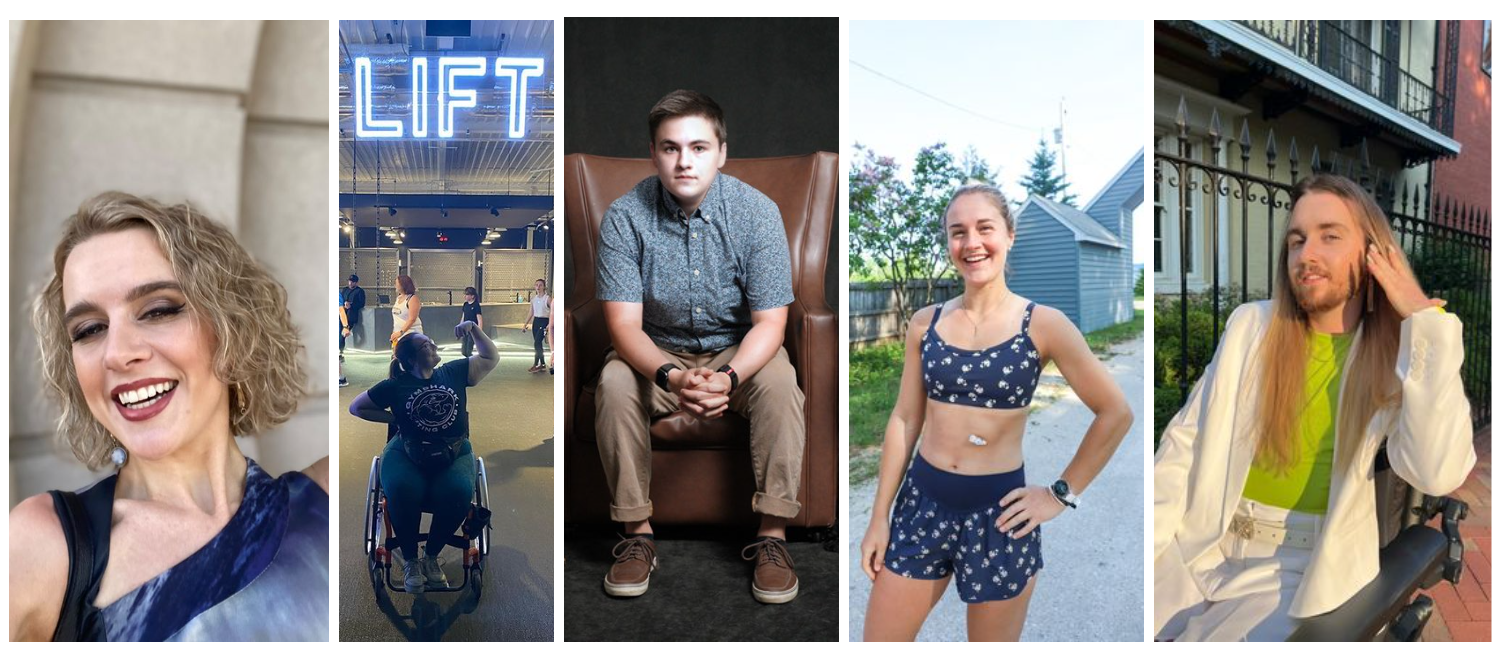Featured above: Friends in the Fight celebrating Disability Pride — @survival_of_the_sickest, @maddiexgordon, @taylorthetransgineer, @kristendoornbos, @thedisabledhippie
As June winds down, I often feel a twinge of sadness knowing that Pride Month will end. I don’t care much that the silly rainbow-themed products in big box stores will be moving to the clearance section. It’s the coming together of community that brings me so much joy in June. My queer and trans friends shower a little extra love on one another. We show up together at parades and brunches and wear our identities a bit louder. While I know that my city hanging flags doesn’t bring systemic change, it does make my heart a bit fuller, my step lighter. I feel seen, loved, and part of something bigger than myself.
I take some time, each June, to think about the work that is still to come and how I can help to move the needle forward. I learn about the incredible trans and queer activists who brought us Pride and the many societal improvements that LGBTQ+ folks have today. It is remarkable just how many of these activists are BIPOC and/or disabled. Some have had to fight for equality on several fronts – race, gender, sexual orientation, religion, disability… This intersectionality is at the core of the queer and trans rights movements. It also plays out in how we celebrate pride (see me pictured below with my friend at Pride, celebrating the importance of staying hydrated for our POTS diagnoses – him in a wheelchair and me in rainbow compression socks). It is evident in the demographics of our support communities. It is also part of the history of Disability Pride Month.
Disability Pride Day was first held in Boston in July 1990, following the passing of the Americans with Disabilities Act (ADA) on July 26, 1990. This celebration included the first Disability Pride Parade, which was organized by Diana Viets, a disability rights activist, and Catherine Odette, a queer activist and creator of the Dykes, Disability, & Stuff newsletter. Disability Pride Parades have been held in over a dozen cities around the US since the first parade in Chicago in 2004, and in July of 2015, former NYC mayor Bill De Blasio declared July “Disability Pride Month” ahead of New York’s first large-scale Disability Pride Parade.
Ironically, this movement has gained visibility since the start of the pandemic. As celebrations turned virtual, disabled communities around the world realized that these online venues are more accessible for many participants. Visibility campaigns included those who may not have been able to march, but could post on social media each day of July about what disability means to them. Our friends and family – not to mention the larger audiences of reposted content – could witness the nuances of what disability can look like. They could get involved and learn without having to physically show up.
More on how the pandemic has affected accessibility here.
At this moment, when many disabled folks feel isolated in a society resuming “normal” life, Disability Pride Month is a way to connect and be seen. Let’s share our stories. Share the pride (because, yes, we are proud to be disabled!) as well as the bad days. Let’s post pictures of what disability can look like so that our diverse community is not reduced to an icon on a blue sign. And let’s learn! Read, watch, and listen to others’ experiences. Use your platforms to repost and elevate the stories being shared. If nothing else, let’s spend this July spreading love, empathy, and pride in our many intersecting identities.
Happy Pride and Disability Pride to all of you, my dear Friends in the Fight ♡


One Response